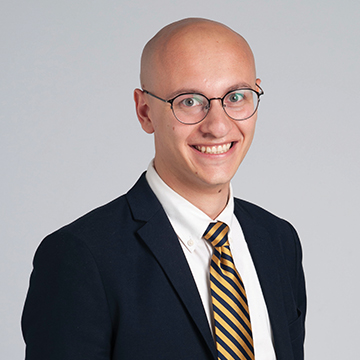A Practical Approach to Addressing Resident Burnout
Jeremy Weleff, DO, is a fourth-year psychiatry resident at the Cleveland Clinic. During his time there, he has launched many interventions to improve resident wellness. His work in this area has garnered him several awards including the Accreditation Council for Graduate Medical Education David C. Leach Award and the Cleveland Clinic Bruce Hubbard Stewart Award for Humanistic Medicine.

Here, Dr. Weleff shares some of his insights into the importance of mental health and wellness in graduate medical education (GME), how it can be better approached, and how he was able to affect change at his own institution.
The Maslach Burnout Inventory was published for the first time more than 40 years ago with the goal of measuring and assessing occupational burnout. Yet the struggle continues to effectively address medical student, resident, and physician burnout.
As osteopathic physicians, we know that structure informs function, and we see that playing out in the realm of mental health and burnout in medical education; that is, the current structures are producing undesirable results for our medical students and trainees.
Across the country, GME departments are inheriting medical students with already high levels of burnout (up to 45 percent according to some studies) and are placed in a situation of playing “catch up” to effectively support their trainees.
Thinking structurally about physician wellness means addressing the root causes of these outcomes. In a practical sense, this means each individual training program, each GME, and each employer should be cataloguing and addressing these factors in a deliberate and sustainable way—beyond token gestures and wellness modules. If they cannot, they should become advocates for changes at other levels, such as institutional policies that positively affect workflow, trainee reimbursement, and benefits. Institutions must maintain a fine balance between top-down and bottom-up approaches to resident wellness.
Starting at the top, leadership must be willing to not only accept the current state of their trainees’ mental health, but also to make change through deliberate action. GME leaders must be willing to go beyond the minimum requirements for resident wellness, to set a higher bar and require that their program lead by example. There are many existing frameworks and strategies to do this, but leadership must be willing to create an environment where these activities are encouraged, without putting additional burdens on residents to fix the problem.
From the bottom-up, these initiatives should reflect the culture and needs of that specific institution. At the Cleveland Clinic, we did this by first documenting all current wellness programming available to trainees in GME and within the institution. Enabled by our leadership, a dedicated staff member had created an online app to host these resources.
Out of this came the need to found the Wellness Council, a group of representatives from each training program tasked with coordinating efforts to improve trainee wellness across all of our training programs. We created an anonymous outlet for resident feedback, and that led to swift action on many issues over the pandemic, including ensuring that incoming residents were well supported, and concerns over prioritization of the COVID-19 vaccinations. GME leadership responded promptly and with open communication for action to proceed unhindered.
Our council also created the Interspecialty Mentorship Program as the result of resident orientation going virtual due to the pandemic—there was a fear that residents would feel disconnected from their institution. The mentorship program provided an additional opportunity to foster camaraderie and collaboration among the specialties, to gain a better understanding each department, to bond, and to transcend traditional departmental boundaries.
We were also able to secure a funding stream for grants allowing for reimbursement to residents for wellness-related expenses. This program was funded through GME and provided low-barrier funds to support trainees. Many used it for home fitness, literature, art supplies, and other health and wellness-supporting equipment or supplies.
Moving towards a sustainable structure of medical training and practice means deliberately planning sustainable initiatives that target the factors that influence burnout and wellbeing. The system we have inherited, which seems so unmanageably large and unchangeable, is very clearly mendable – and it is our responsibility to do so.

